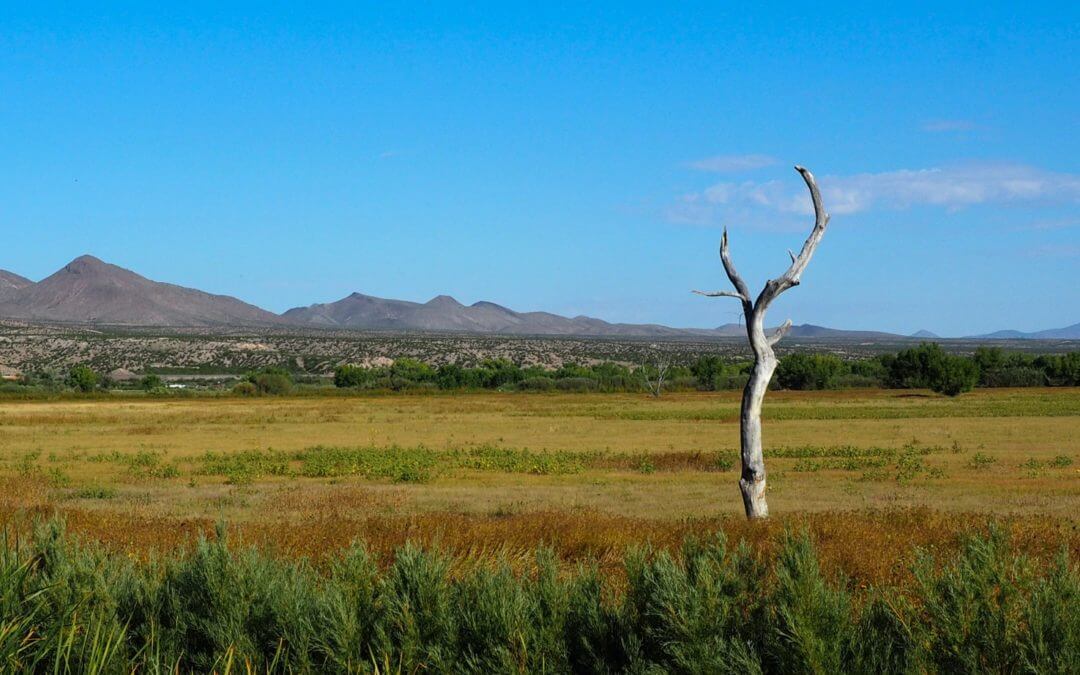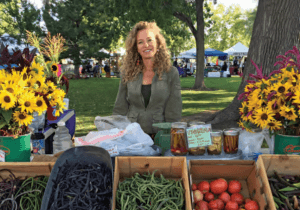Cecilia Rosacker
Polvadera, New Mexico
Cecilia has served as executive director of the Rio Grande Agricultural Land Trust since 2007. RGALT was founded at Cecilia’s kitchen table by fellow farmers and the biologist from USFWS Bosque del Apached NWR all interested in protecting the Rio Grande and its floodplain – the farms and riparian lands. She brings a passionate lifetime commitment to growing and protecting New Mexico’s agricultural lands and water. She is a multi-generation native, Hispanic New Mexican raised on a farm between Santa Fe and Espanola. She has been a leader in the middle Rio Grande landscape conservation initiative to protect agricultural land, wildlife habitat and water, and has developed partnerships and implemented collaborative efforts to access federal and state funding for conservation easements and habitat/restoration projects. Cecilia started the Socorro Farmer’s Market, and served on the New Mexico Farmer’s Market board, helping to start markets all over the state. She also served on NM Food & Agricultural Council for five years, working to create agriculture markets and a healthier New Mexico. Cecilia owns and operates a 30 acre certified organic farm.
The Rio Grande Agricultural Land Trust serves to protect New Mexico’s natural resources and rural quality of life for the five New Mexico counties of Bernalillo, Sandoval, Sierra, Socorro, and Valencia. RGALT, a community-supported, nonprofit, works with working landowners who live in the Middle Rio Grande Valley and are dedicated to the preservation of working farms, ranches, wildlife habitat, and open space.
This interview was conducted by Carly Schmidt on July 7, 2020. Learn more about Cecilia’s work and programming at RGALT.
You shared some of your story during the “Food Insecurity, Water & COVID-19: Lessons for a Better Future” panel at River Rally and it resonated with so many people. Could you explain for this audience how you came to do the work you are doing now?
I was raised on a farm between Santa Fe and Espanola and was the eldest of 7 kids. My parents were what some would call the “first hippies.” They wanted to live very close to the land and eat homegrown food. This lifestyle was also a more financially feasible way to feed their kids healthy food. They were both in high school when I came to be. No bank was going to give them a loan, so they bought a piece of land through a real estate contract. They had a lot of kids, which made a good workforce! We had goats, cows and an orchard and we just lived sustainably off the land. I grew up with a connection to the land, eating food freshly harvested.
When I went to college in Socorro at New Mexico Tech, a science and engineering school because that’s what we were all encouraged to do. Especially with Los Alamos National Lab and Sandia Labs being so close, if you got an engineering degree you’d be set. When I was ready to start having kids, I wanted to give them the same upbringing. When I had my first son, my husband and I bought a farm in the Socorro area. I grew our own food and also sold it to restaurants, grocery stores, and at the farmer’s market in Albuquerque. We were fueled by a passion not just for the land but for eating and cooking fresh food. I was able to pass that on to my boys. When we ate meals, my boys could identify where and who grew everything on their plate.
Growing up in northern New Mexico, I noticed that the farmland was disappearing and getting subdivided. I’m now living in the middle of 30 acres so I have a vast landscape view. My 30-acre farm is a small farm for this area, so when Socorro County was thinking of zoning we looked at ways of protecting farmland that were optional for the agricultural landowners who wanted to protect their land and maintain our rural way of life. Farming and protecting farmland is a lot of work. You’re never finished; it’s a 24/7 job. Both are a labor of love that gets weaved into your life the same way family is.
Did the experience of seeing land disappear inspire you to start the Rio Grande Agricultural Land Trust?
Yes! One of our major concerns with agricultural zoning is the idea of government imposing restrictions on landowners. We see it as a taking of our private property rights. That’s why the land trust model and conservation easements was so appealing, because it’s voluntary. It is a tool that landowners can use to protect their land without imposed restrictions.
What were interest levels like when you started RGALT from farmers and landowners like yourself?
We existed for almost 7 years before we did our first conservation easement. There was a lot of misinformation out there, like conservation easements were government organizations coming in to take away private land. We address these common misconceptions on the RGALT website. There were organizations publishing information like that. What stimulated interest from conservation organizations was the fact that we are flanked on either side of the valley by wildlife refuges. Here in the Middle Rio Grande, we have 5 state and national wildlife refuges. It is a critical area for over 400 species of migratory birds who use this valley. Our farms are critical bird habitat. They are working wetland meadows when we’re irrigating and they provide connectivity through the refuges. When you look at the Central Flyway, it includes 11 Rocky Mountain states and all the birds are funneled down the Rio Grande. It’s very narrow and threatened, so promoting agricultural conservation easements as also protecting bird habitat made us more attractive to funders and other organizations looking to protect the valley.
How has the COVID-19 pandemic affected demand for local food?
It is interesting that what attracted the public to conservation easements was protecting migratory bird habitat and not necessarily local farms being an important food source. This interest is evolving now because of COVID. People who never came to the farmer’s market were calling my house asking about food availability. I think that the pandemic and the country’s trauma has people thinking about local in a different way. With transport systems shut down and food being wasted in large quantities, people are realizing that the food system is broken. Protecting our farms that make up our local foodshed is finally becoming important to the public.
People have more time on their hands now to really reflect on their communities and what matters to them. A lot of people are cooking at home for the first time! Eating out has been the norm. Some people would come to the farmers market for the vibe, touch food, see farmers, and take pictures but not necessarily to buy their groceries -locally grown food! Cooking at home hasn’t been the norm for a while. Now, people have time and space to explore and think about the local foodshed. I am also seeing more people accessing the outdoors! I have run along the irrigation ditches every morning for 30 years. All of a sudden whole families are out for walks, people in my neighborhood that I have never seen out before. It’s interesting to see people think differently about the space they live in and their community.
How has the farming community adapted to increased demand for local food from the community?
When all this started, I thought that we should plant two acres like in the past but the reality is that there’s just not a reliable local labor force to do so. If there was, I would definitely be doing it. My work with RGALT is more than a full-time job. A few years ago when I did the markets, I worked part-time for RGALT and my sons were living at home and helped everyday with the farm. There are 60,000 acres irrigated by the Middle Rio Grande Conservancy District. We could be producing a lot more food and feeding more people if labor was available. Another stumbling block is water. Looking at the Rio Grande this growing season, you will see more sand than water right now.
With COVID, there’s a whole market that’s not quite the same. The restaurants are just now starting to open, but the menus are more streamlined. Farmer’s markets may be opening in July, but up until now people have put in their order online and picked up their bag of groceries. People seem willing to do that – drive to a location and pick up their food. My son and his wife have a CSA in Albuquerque. They put their CSA membership on Instagram and were sold out within a few hours. The question now is how do we keep that momentum when people get back on the treadmill and their busy lives? The transition is a great opportunity to get local food into the community if people are innovative and make food more accessible.
During the River Rally panel, you told a story about your response to the accusation that your work doesn’t matter. What keeps you centered on your mission and inspired to keep going?
I keep going mainly for the future, for my kids and my nieces and nephews. Trying to live everyday like it matters whether others think so or not. Just the other day, one of my son’s friends came by to say hi. She was excited to go to the Rio Grande overlook spot that I love to go and share. You can see the river and the farmland and where it all intersects. I call it my “piece of peace.” I shared the landscape view with her and her friends from California and explained that this land, this awesome view is protected because of RGALT’s work with private landowners. Like I said, the lives that this work has touched makes it all worth it. Years ago, I took in one of my son’s friends who might have gone into the foster care system, and she said that what she really loved about living with us on the farm was getting up every morning, working together on the farm and feeling needed. This work has touched so many people, and that feels really powerful.









